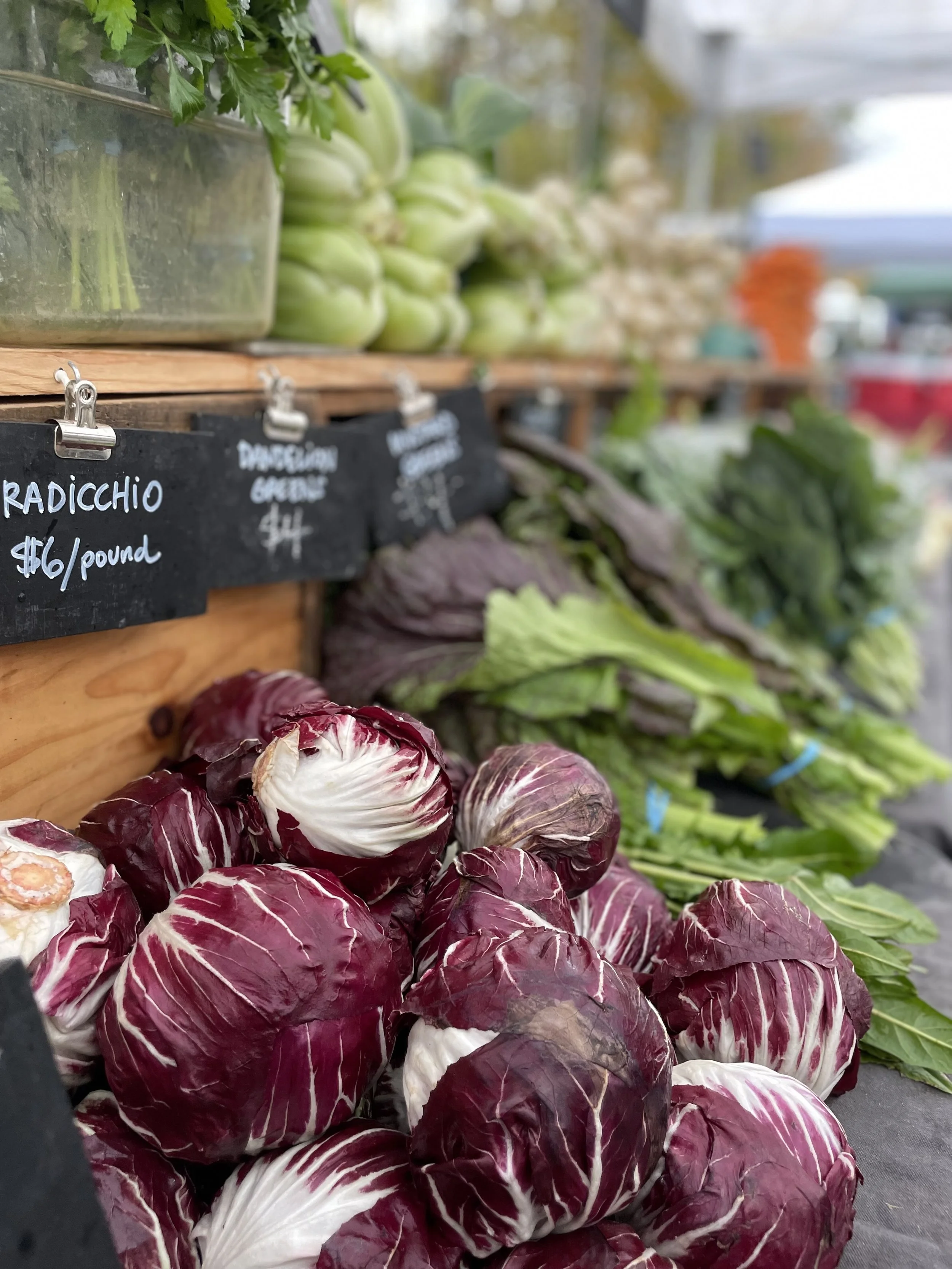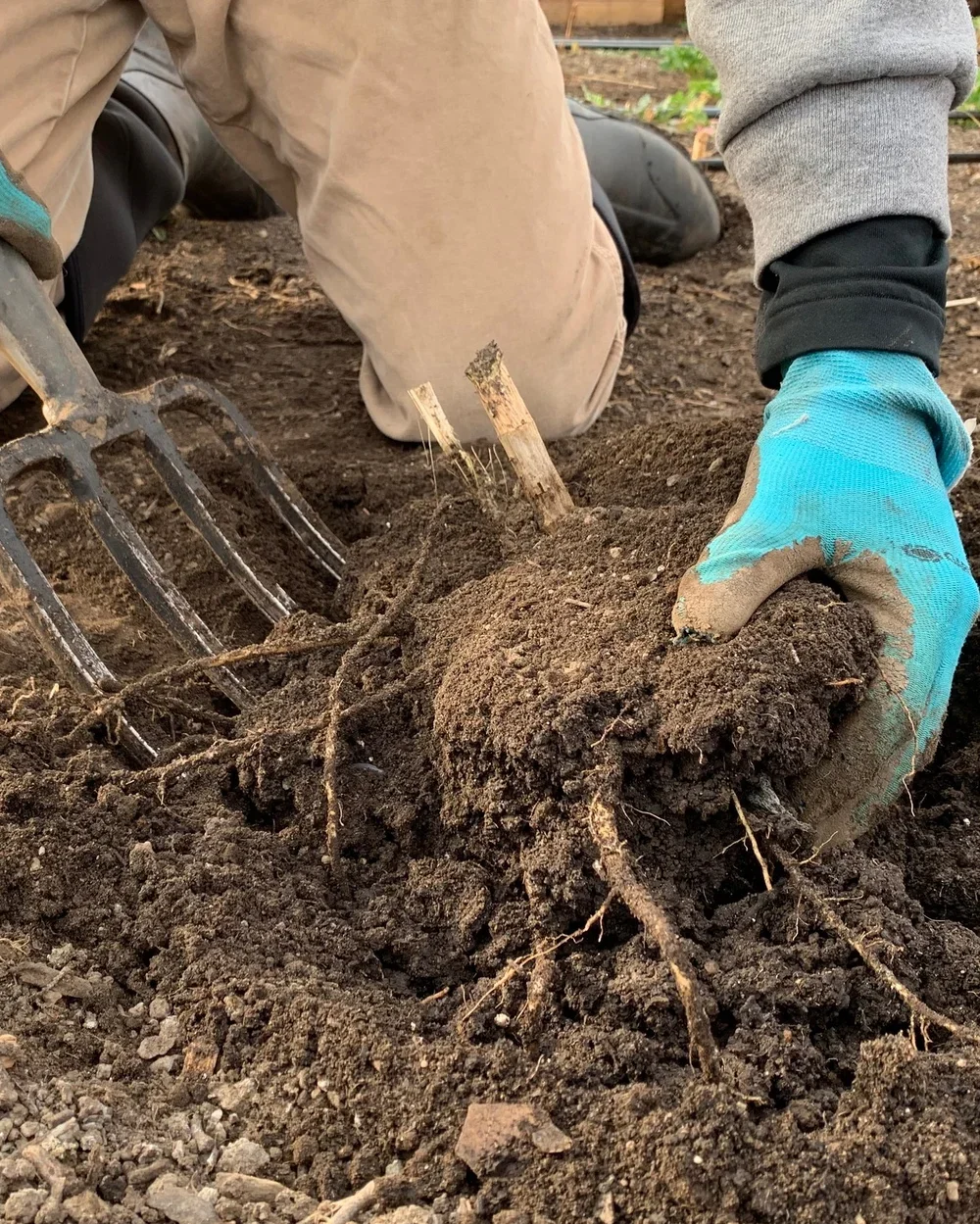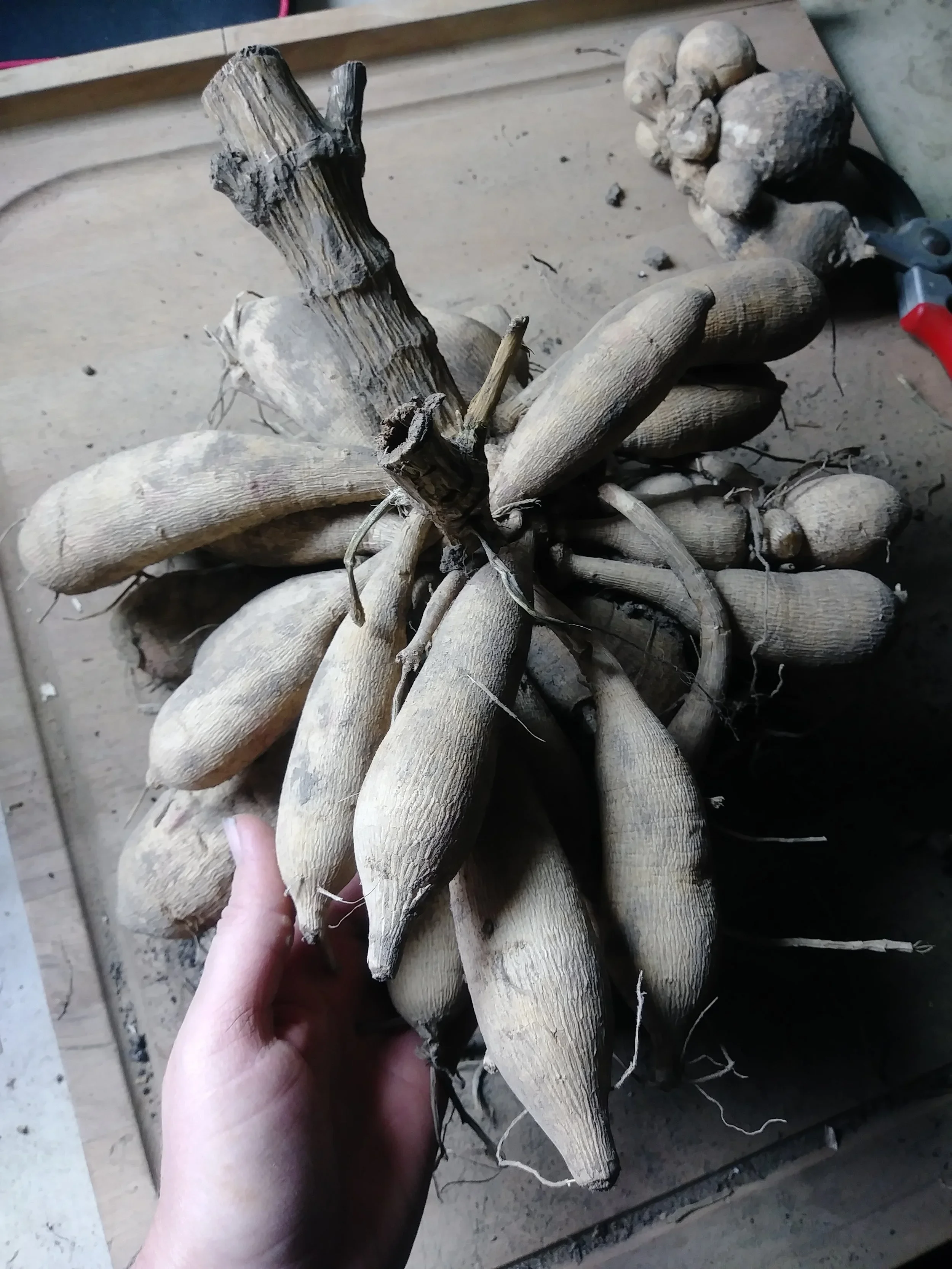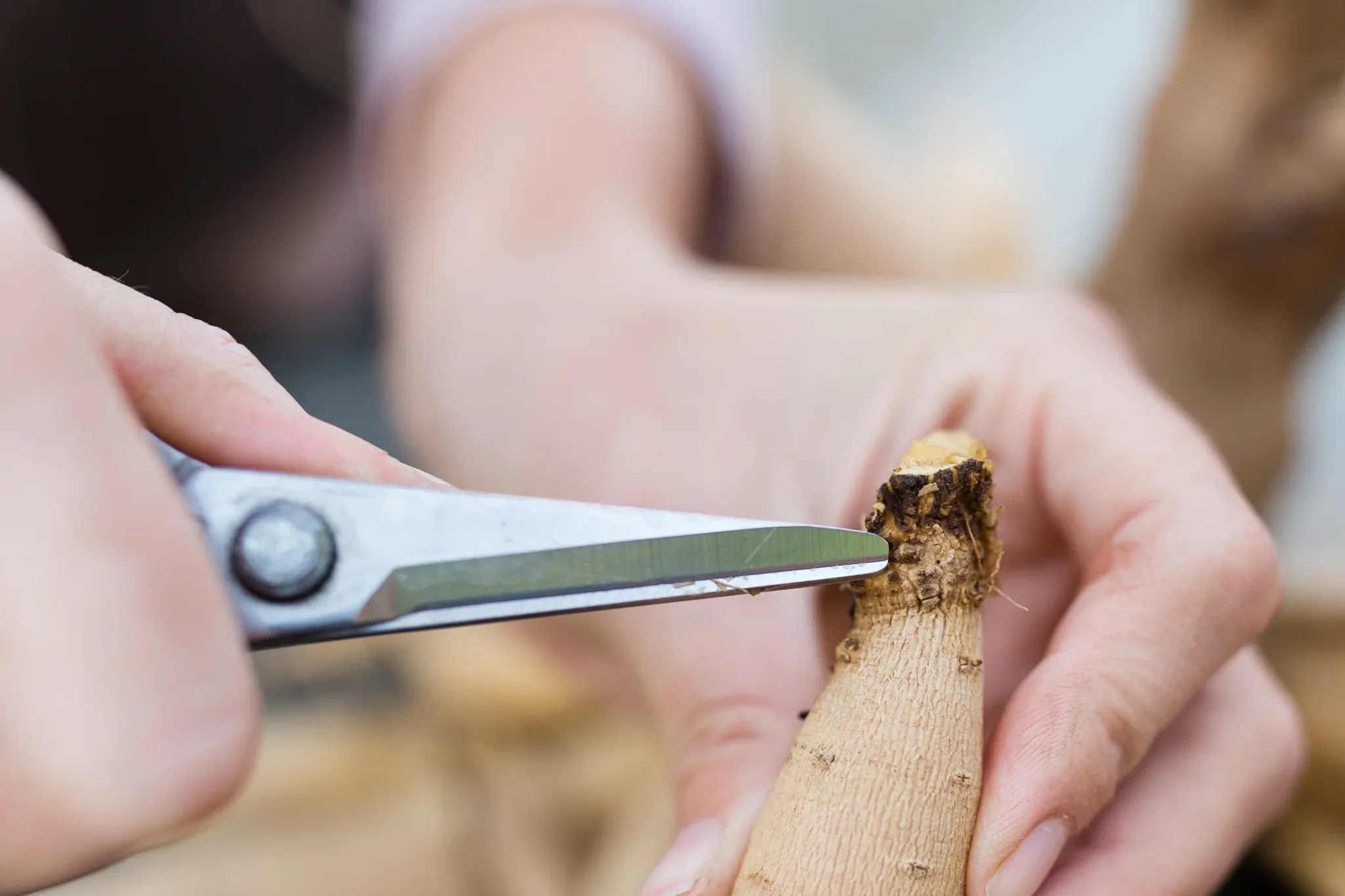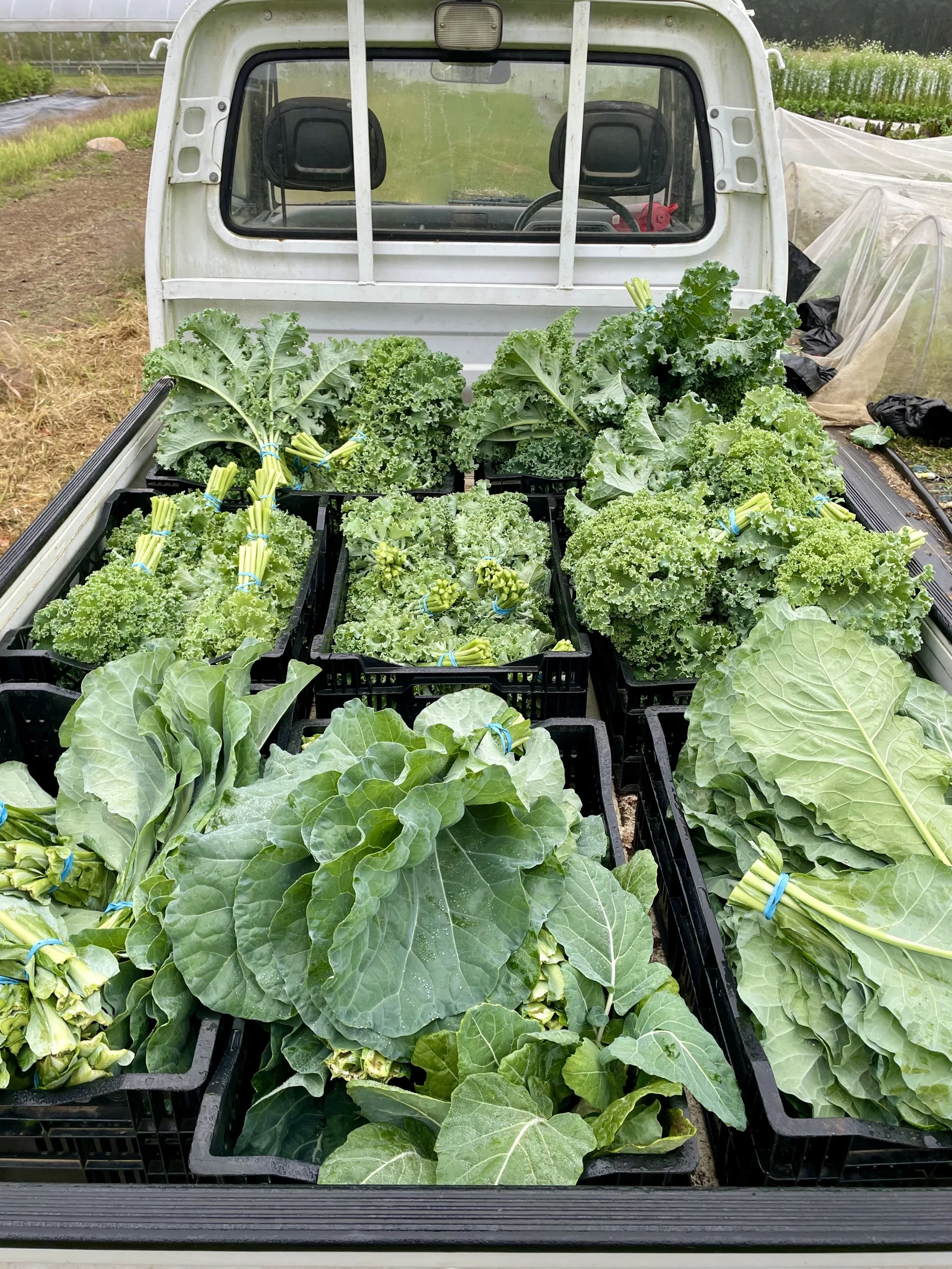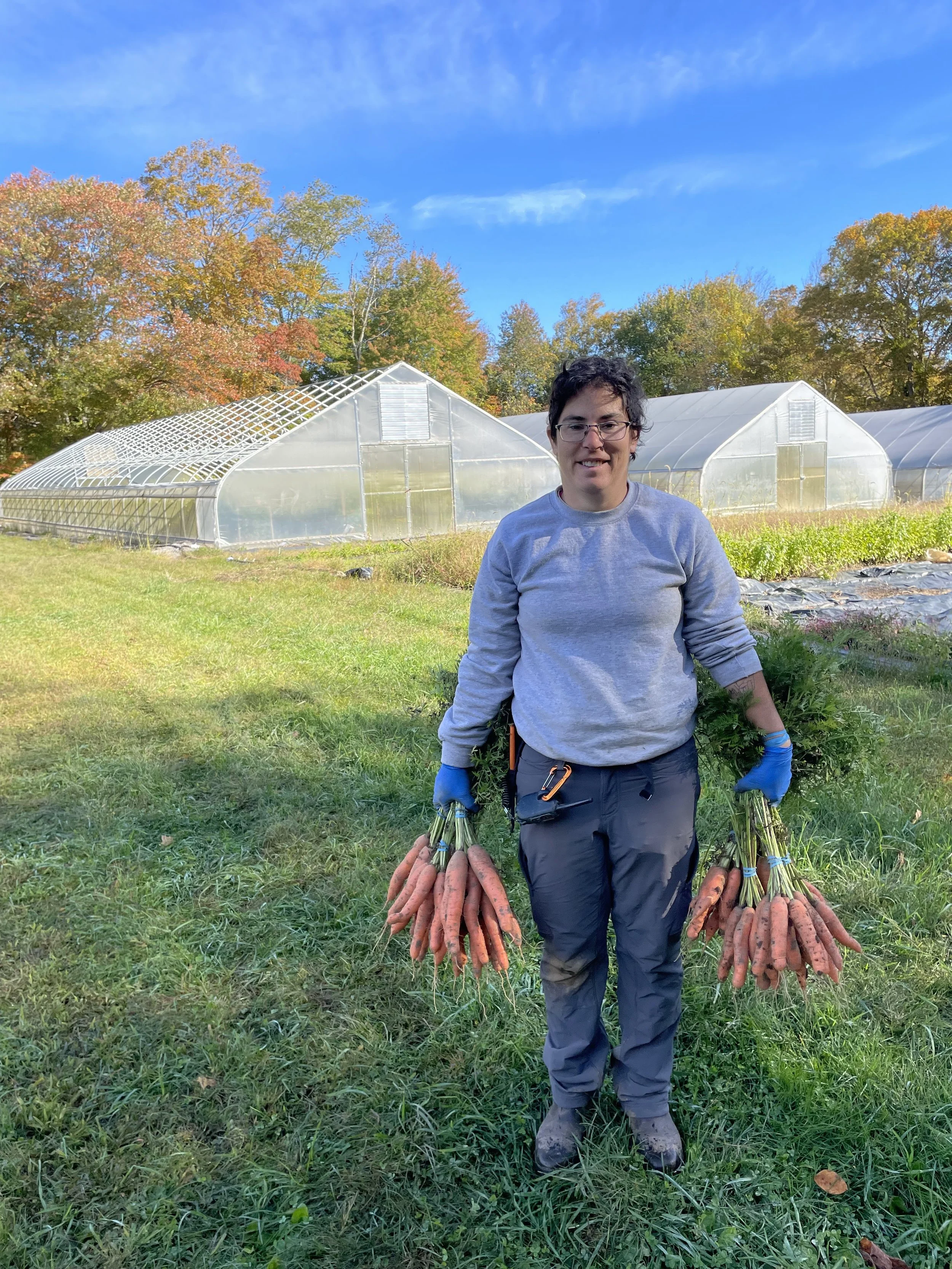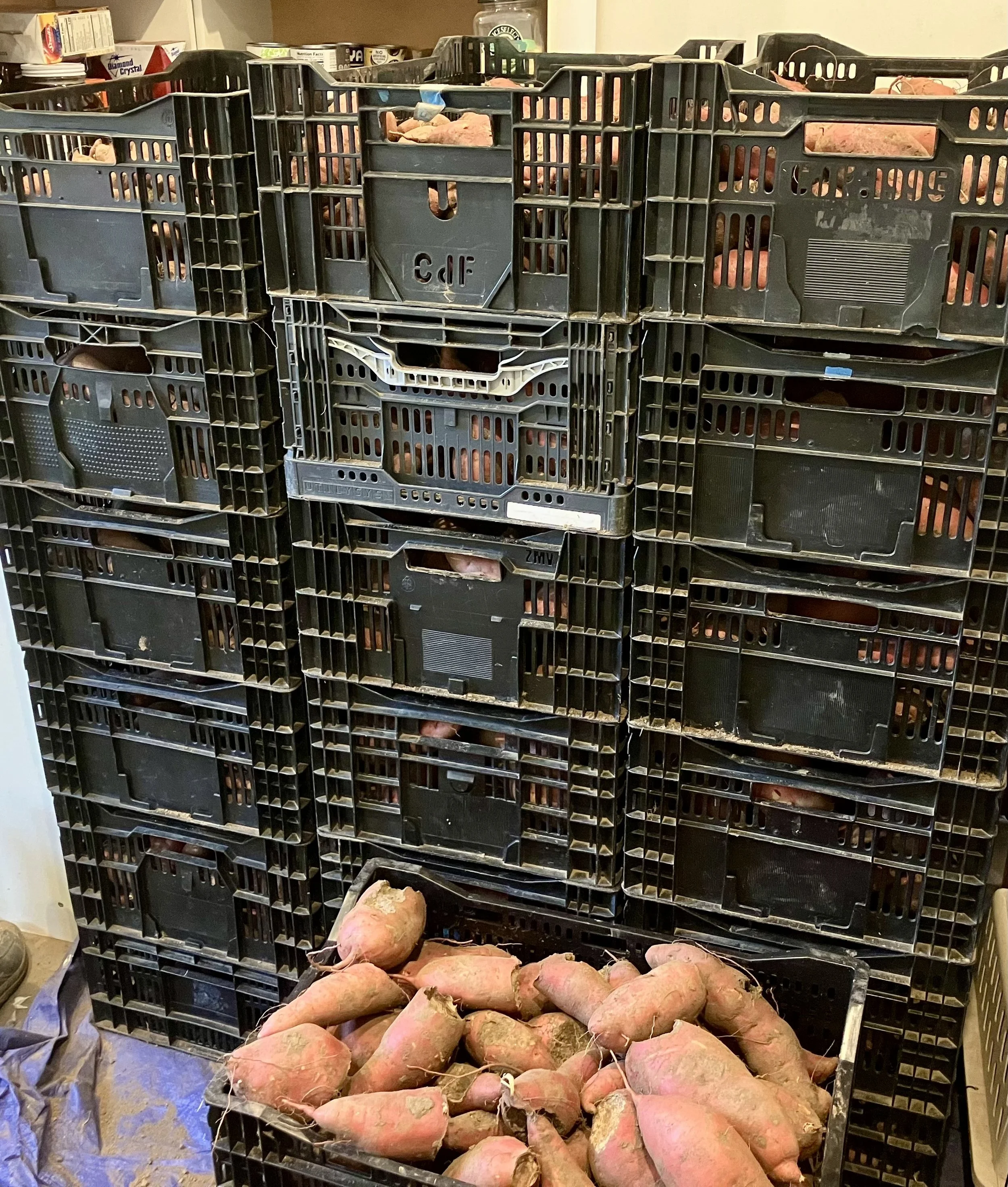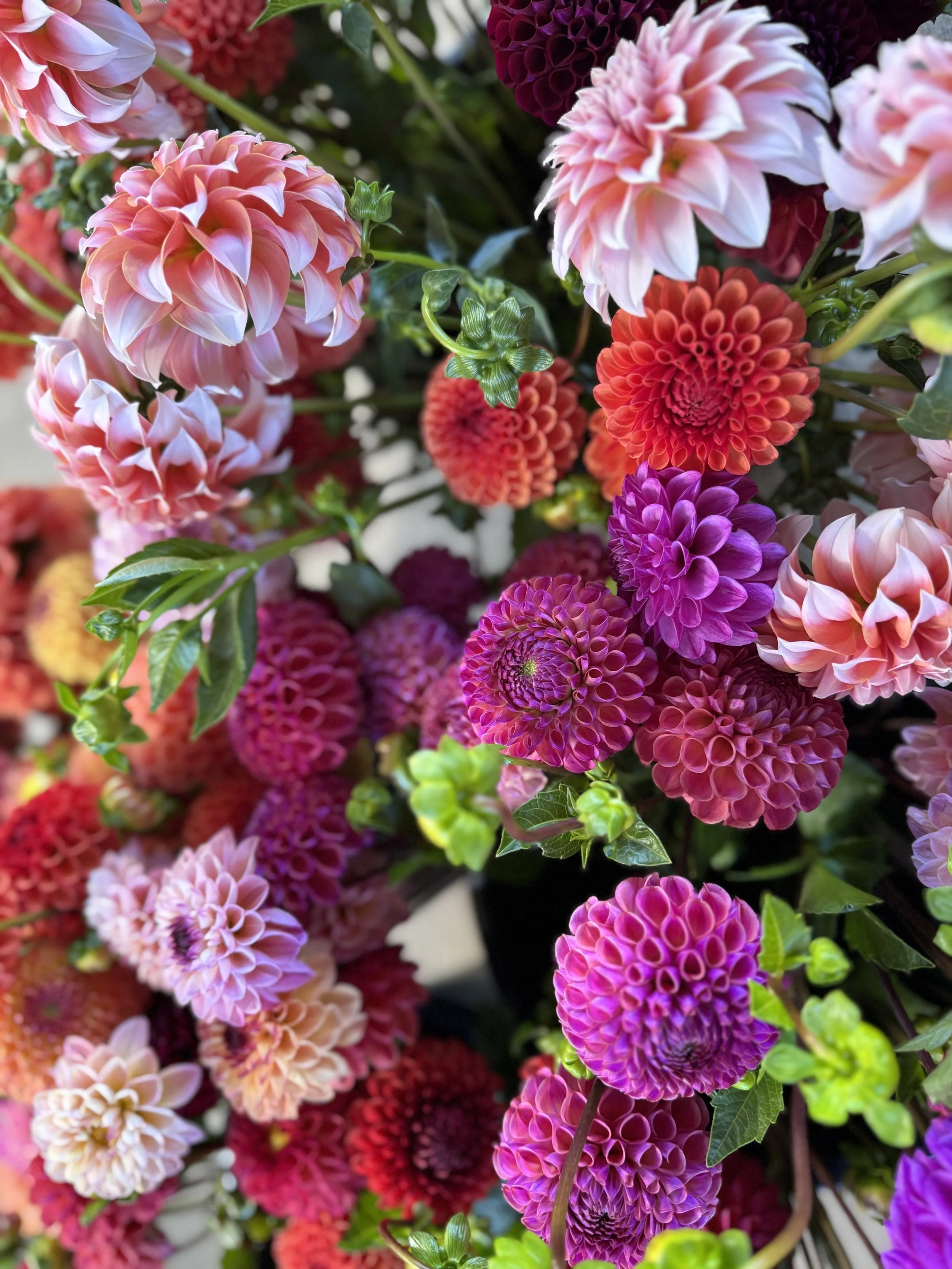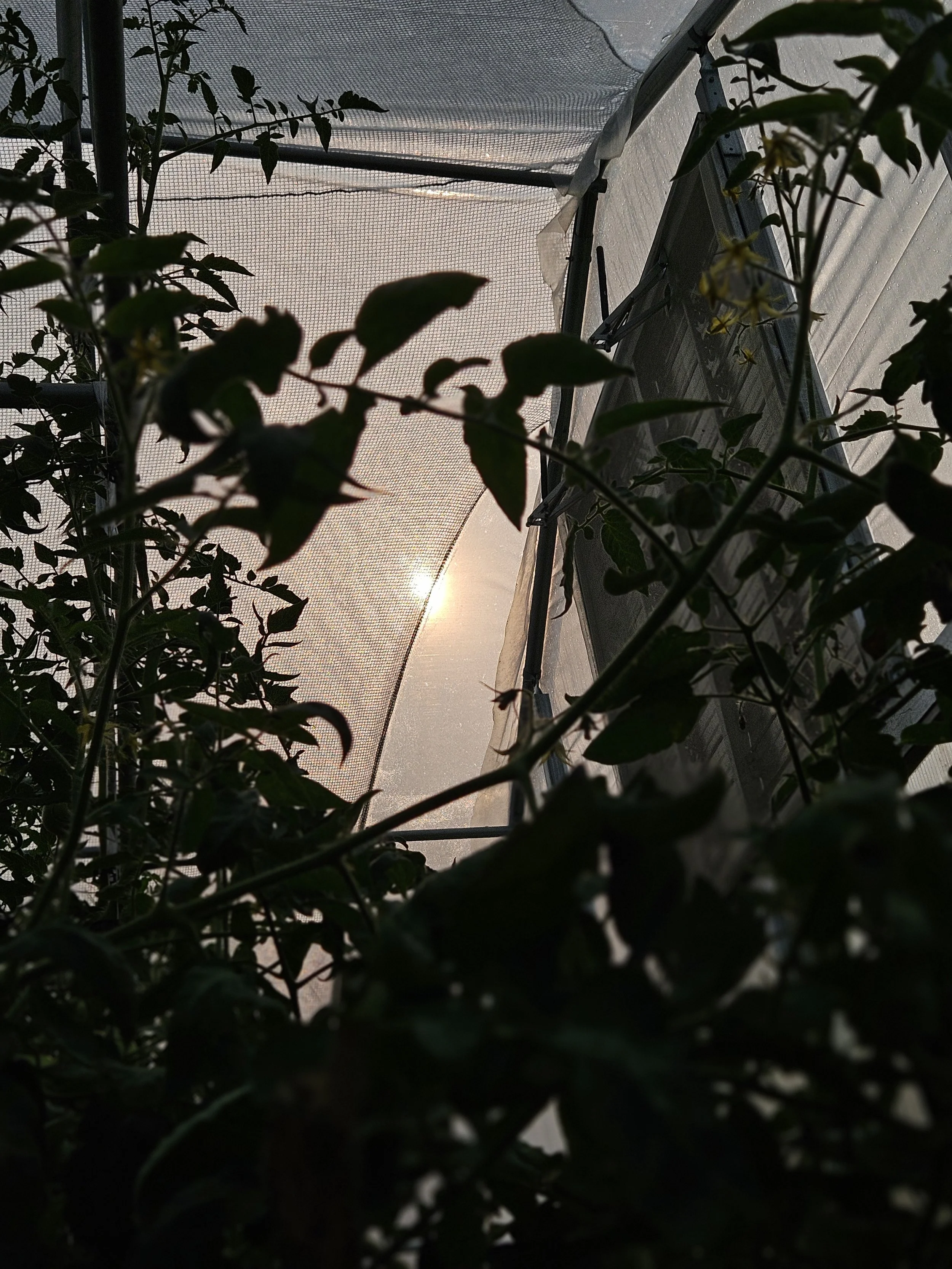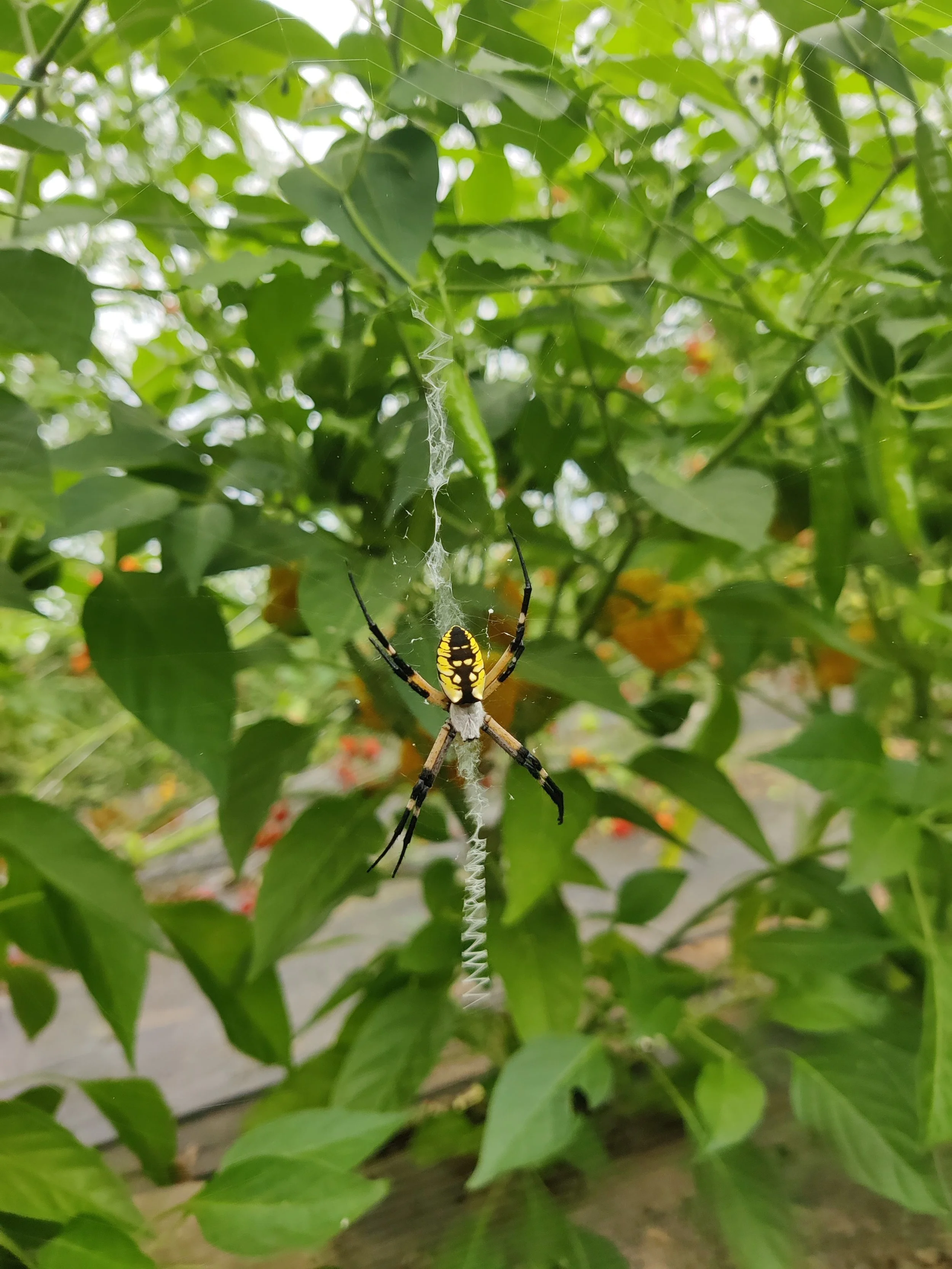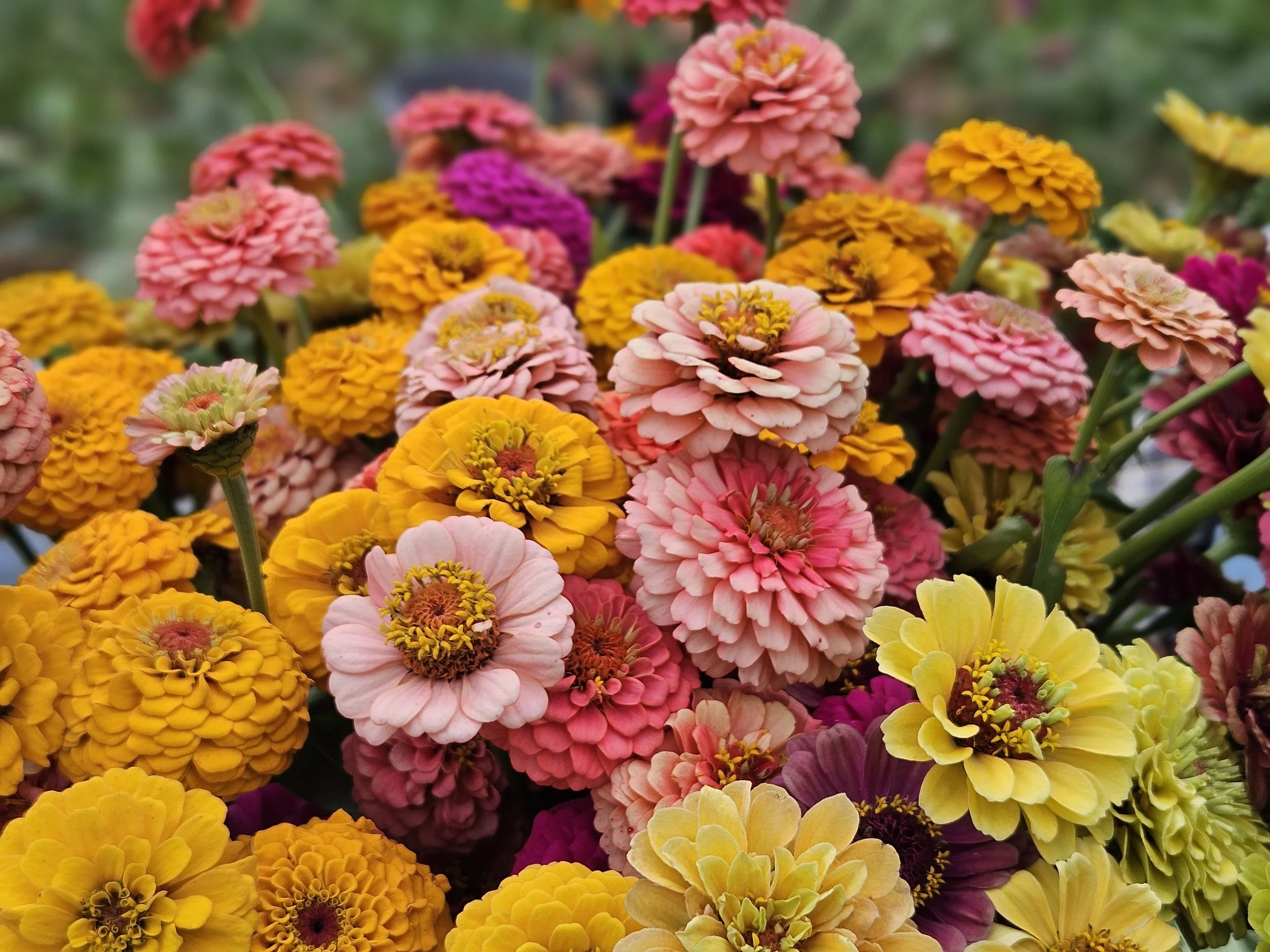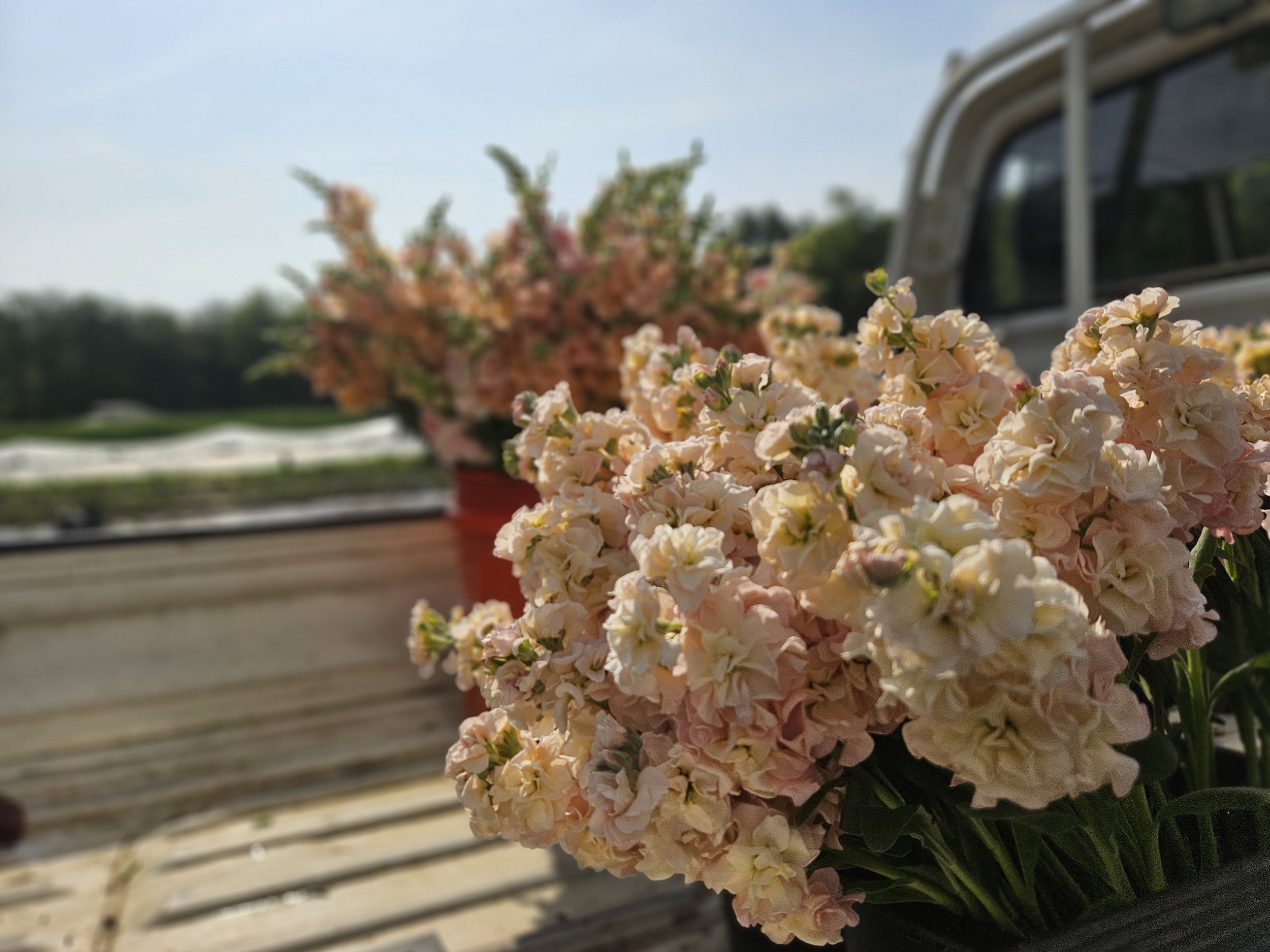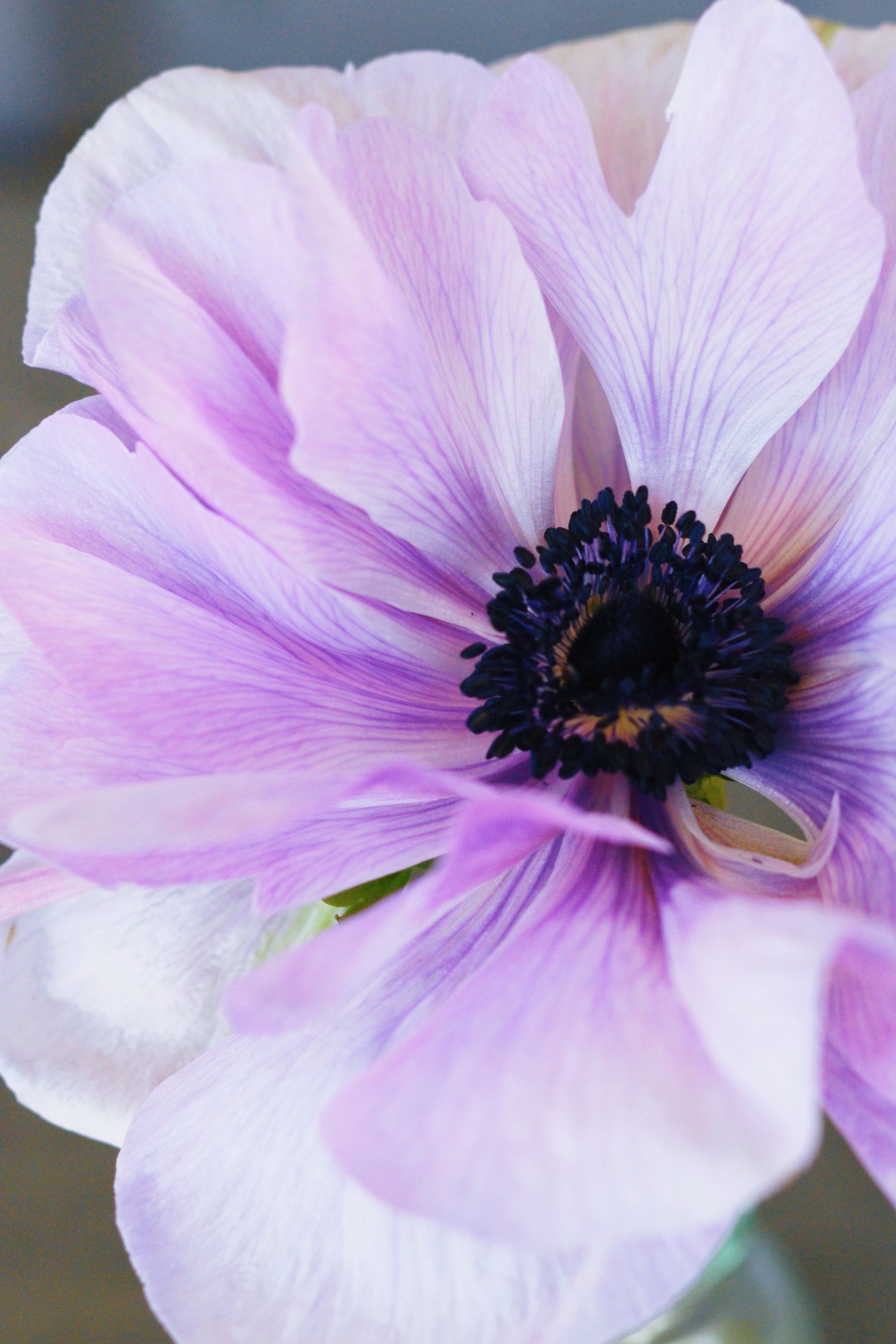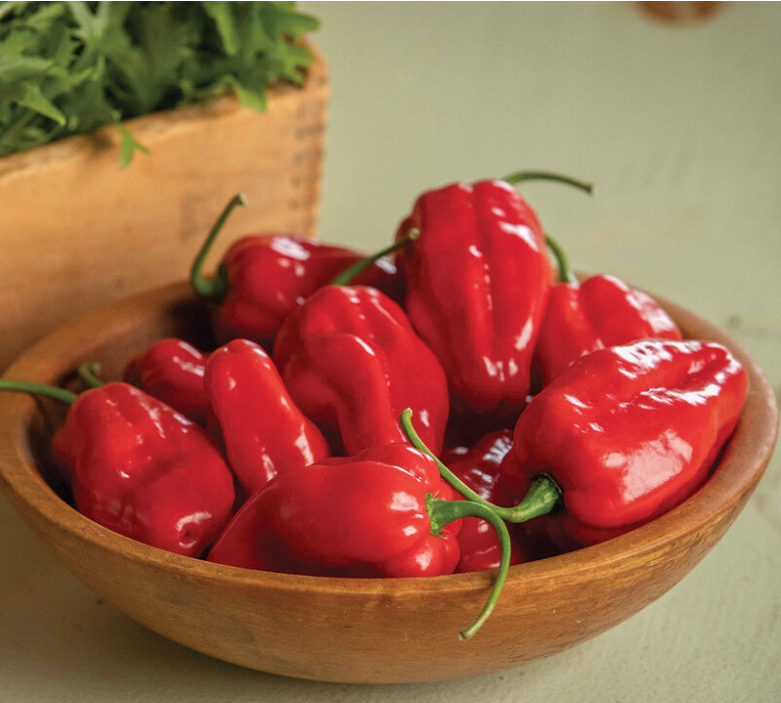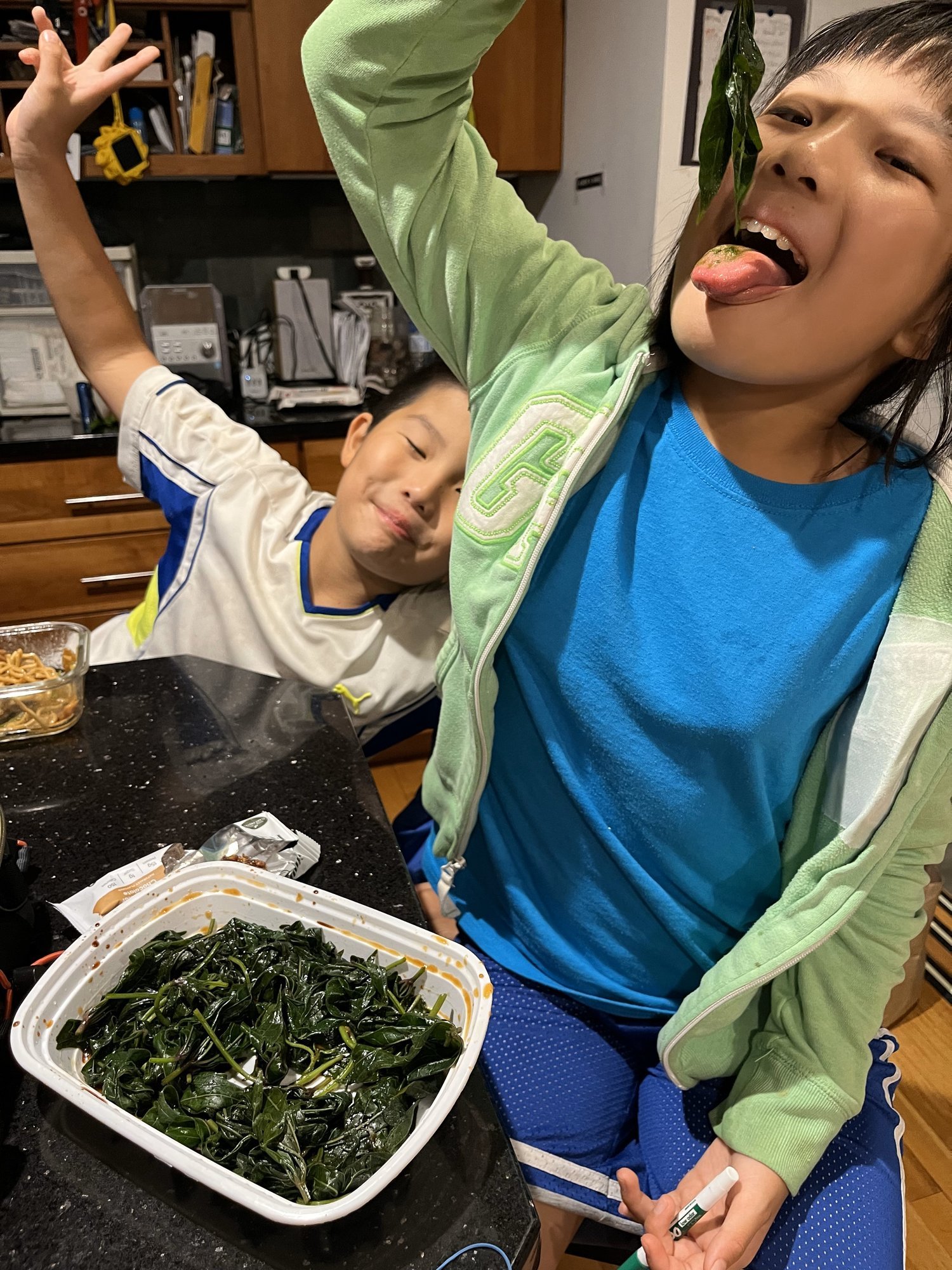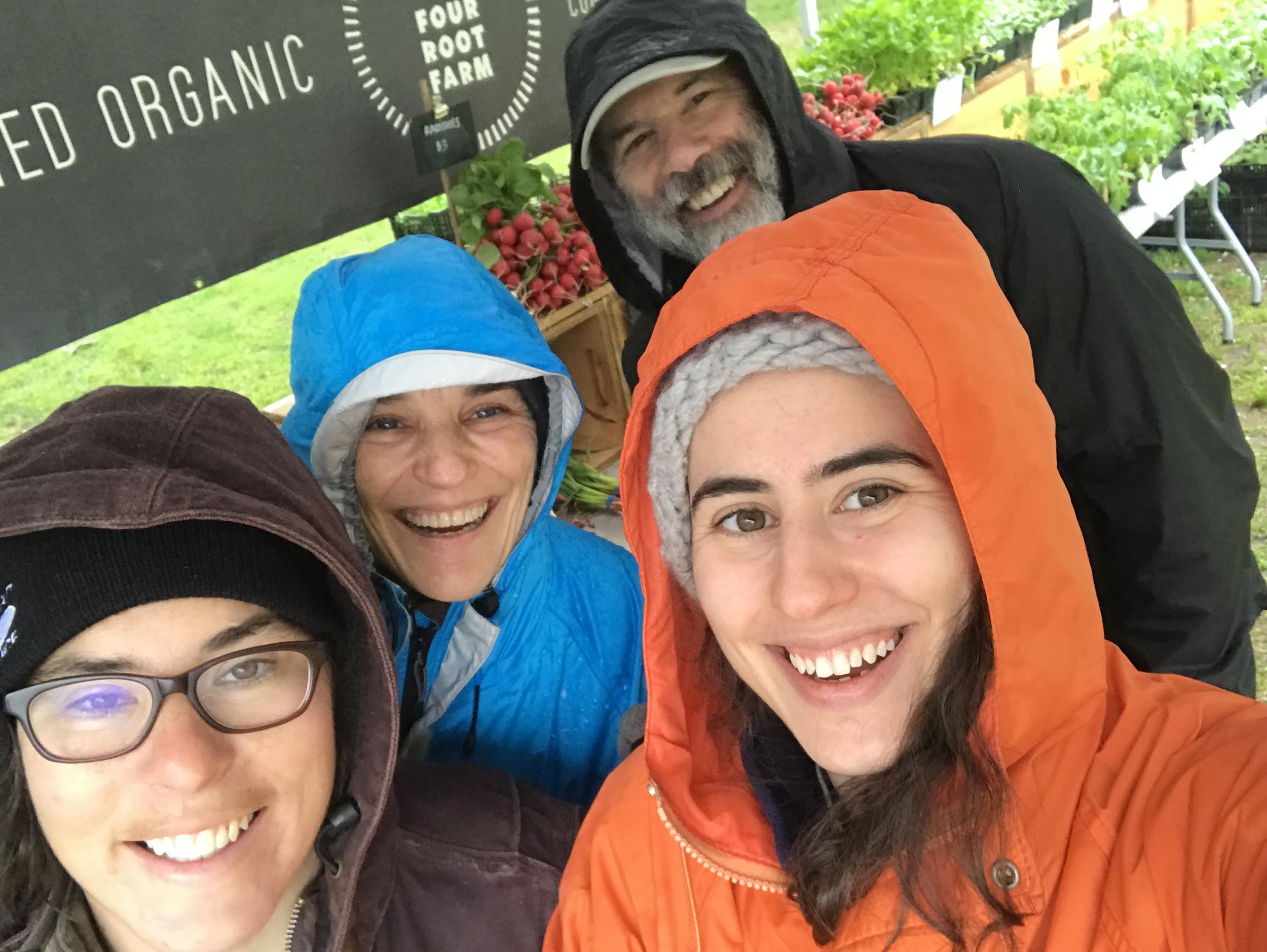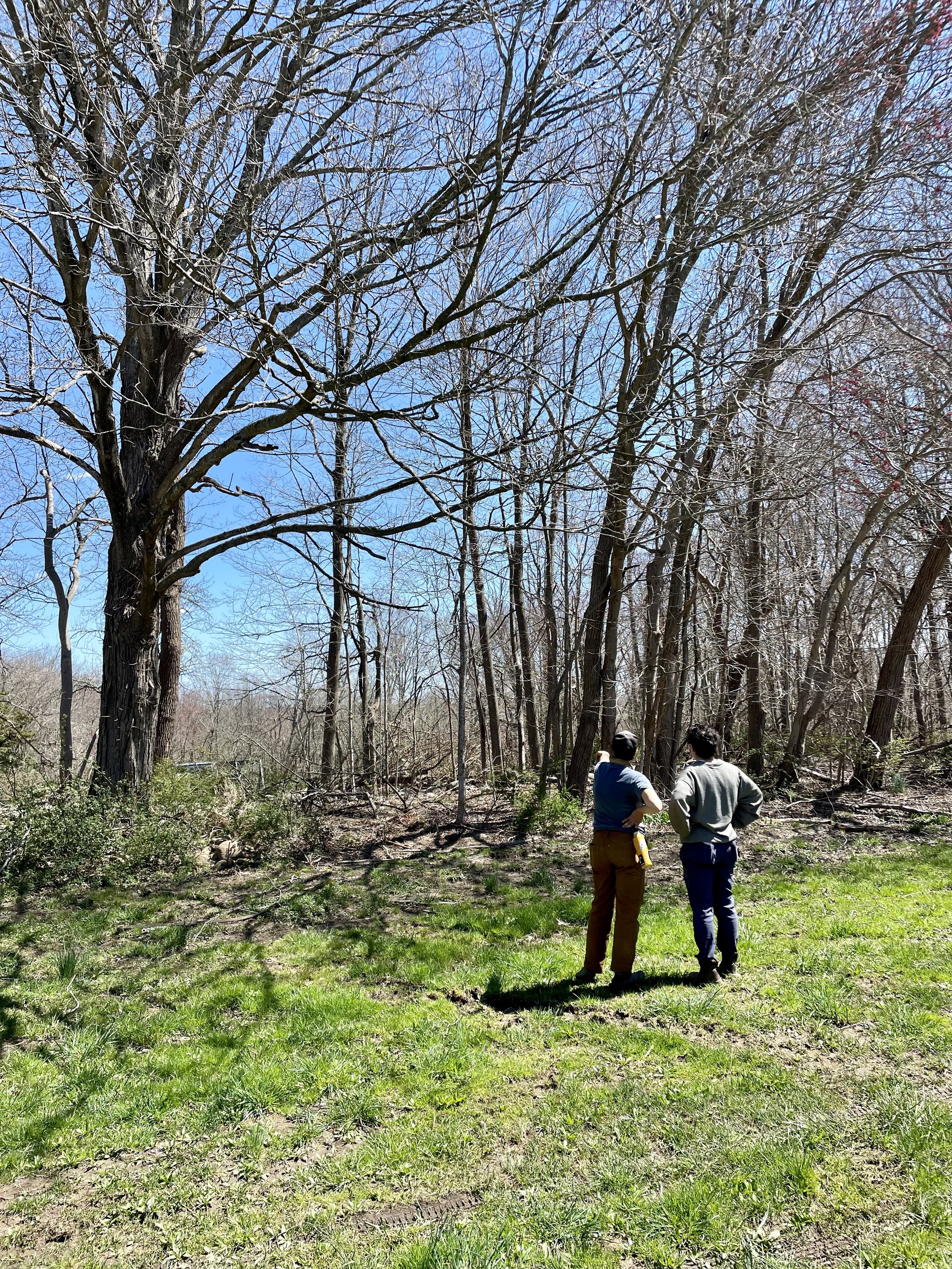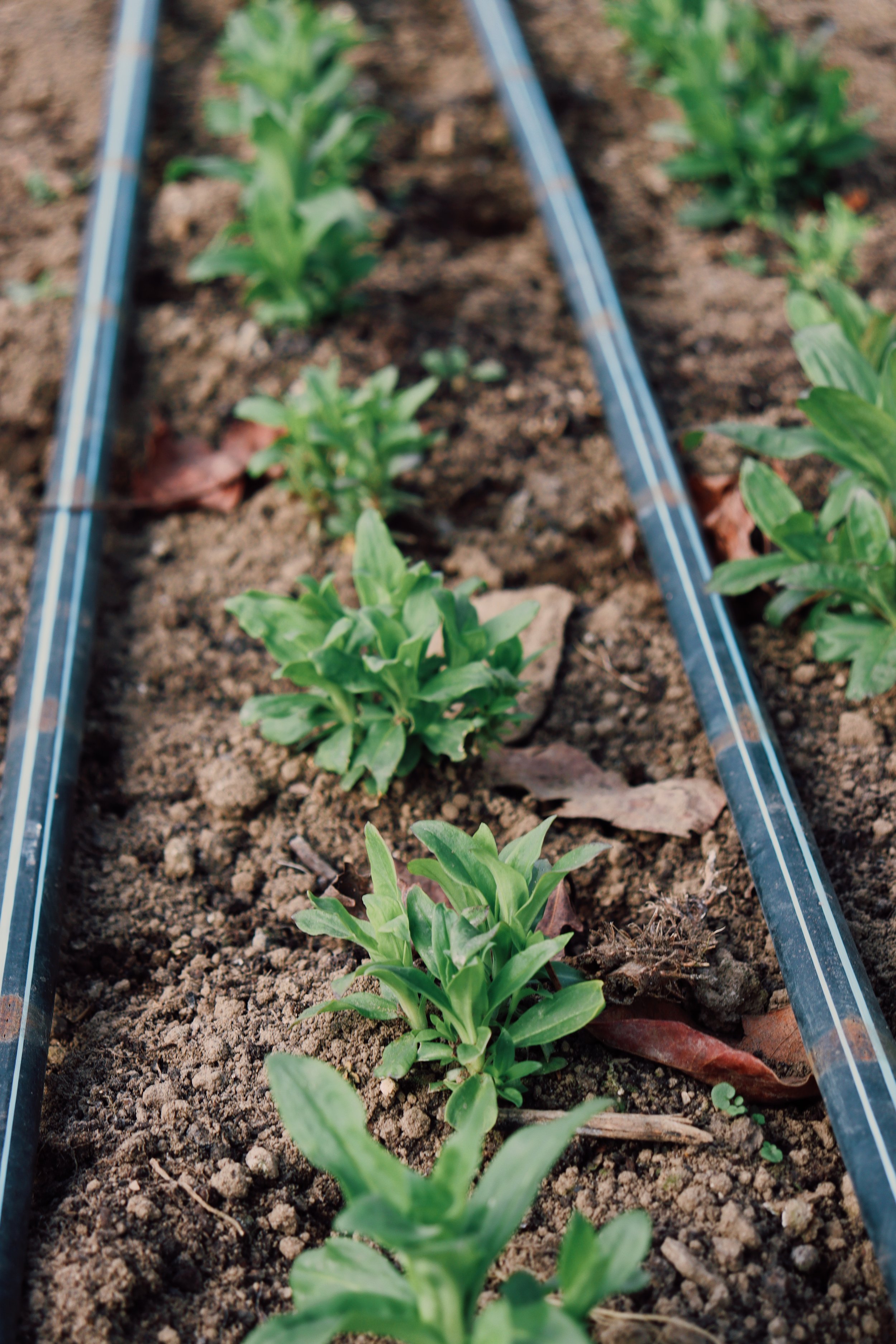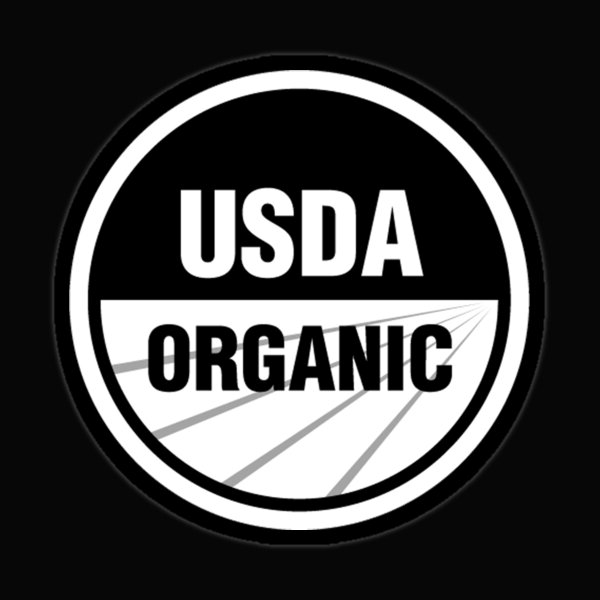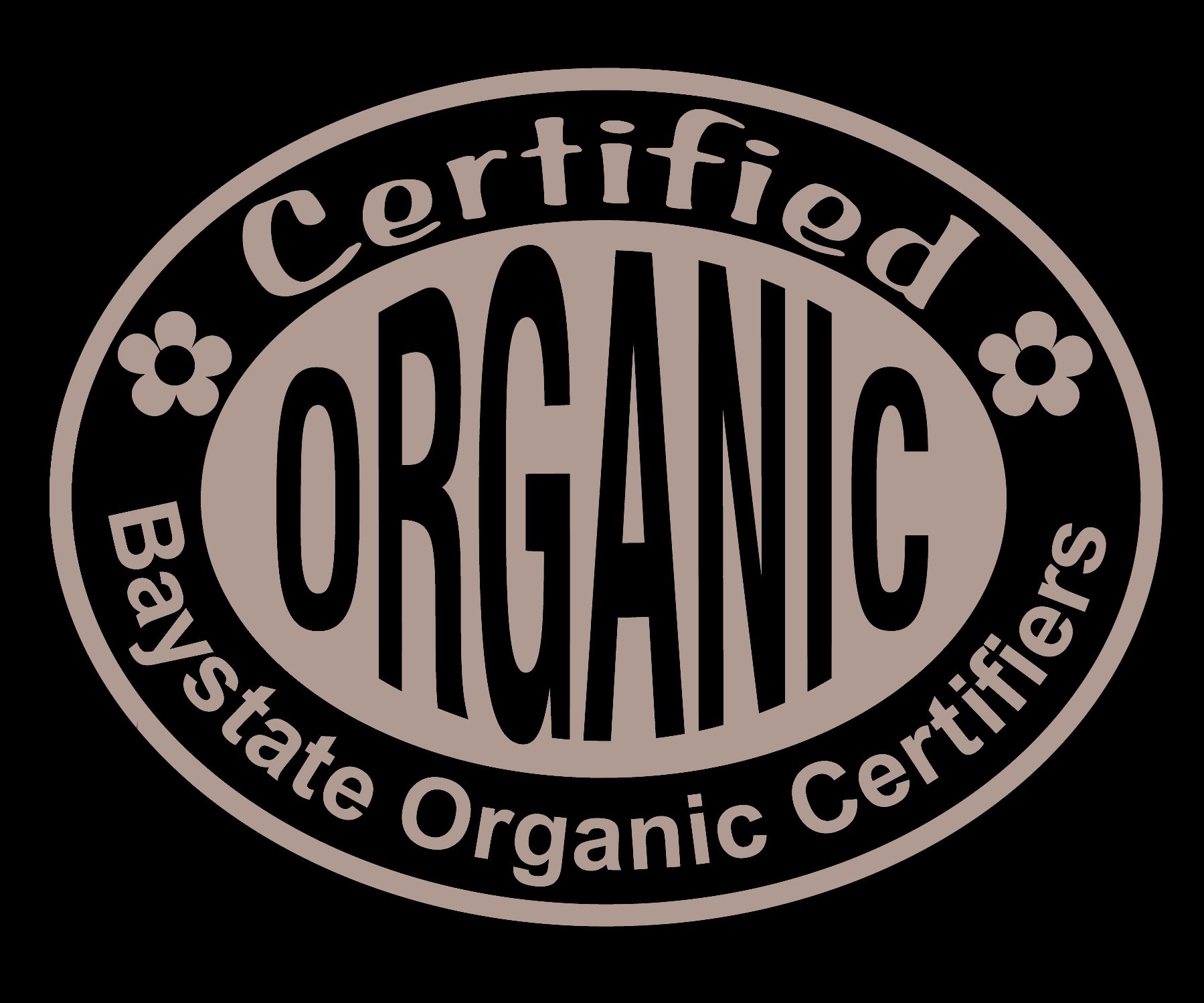We have a fruitful, festive winterberry crop this year!
The holiday season is upon us, and boy, are we looking forward to a few days of rest and relaxation this week. November brings a flurry of activity - if not actual flurries. The garlic, dahlia, tulip, and endive crops all require some heavy lifting in this month specifically. So, once we flip our calendars to November 1st, the month feels like a sprint to the finish.
Leaf mulching the garlic has begun! Thanks to everyone bringing us their pesticide-free leaves!
First up, we planted 500 bed feet of garlic – that’s 4,000 garlic plants if all goes according to plan. One team worked on breaking apart the garlic bulbs into individual cloves, trying to stay ahead of a second team planting the cloves in the field. Each clove is planted 6 inches deep, but we’ll still need to mulch the beds with leaves to protect them from the freeze-thaw cycles throughout the winter.
The following week, Elise started the process of digging, dividing, and storing dahlia tubers from 900 plants. If you tried dividing your own after last month’s blog post, then you’ll know what a feat that is! The crew worked incredibly hard digging up all those plants and washing the tubers on cold November days. Way to go Zach, Sam, Maggie, and Bella! Meanwhile, I was totally off doing something very important elsewhere on the farm. (Probably.) But, I did jump in for the part that’s done seated in a chair in the warm greenhouse - dividing the dahlia tubers! I learned that it might be my new favorite hobby. Lemme at those tubers!
Next, we built the raised bed for the 2026 tulips, planted 7,500 bulbs, and covered them all in a deep layer of compost. It’s always a big job, but a new technique sped things up this year. In the past, we used the “egg carton method,” carefully positioning each bulb in an upright position (see the November 2023 blog). This year, Elise learned that orientation may not matter, so she simply dumped the bulbs into the bed, we quickly rolled the bulbs around to make sure they weren’t overlapping, and: Scene! We added compost to the bed and called it a day.
And finally, last week, we dug and stored the endive roots for our spring 2026 crop. We planted the endive midsummer and since then, they’ve grown thick root systems. We dig the plants out, trim the leaves off, and store the roots in the walk-in cooler until March. Then, we’ll replant them in a dark cooler, and hopefully those 300 roots will grow 300 delicious Belgian endive heads for us to enjoy in April 2026.
All those tasks happened alongside harvesting hundreds of pounds of carrots, washing hundreds of pounds of sweet potatoes, assembling dried bouquets from the thousands of stems we stored throughout the summer, and planting rows and rows of overwintered flower seedlings. Phew!
December will feel slower on the farm, but the season isn’t over yet! We’ll take a couple days of rest this week, and then, we’ll be back at the Wooster Square market inside the Conte West Hills School for the first three Saturdays in December.
Looking forward to seeing you there and wishing everyone a happy Thanksgiving!
-Kiersten
